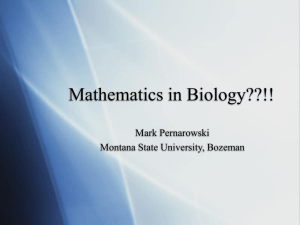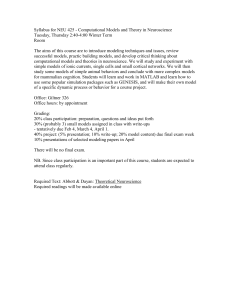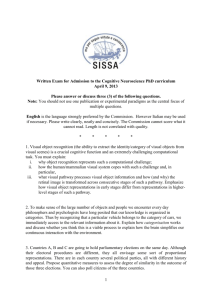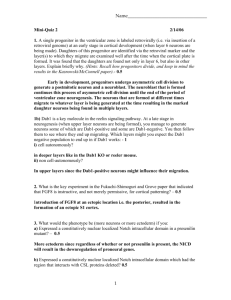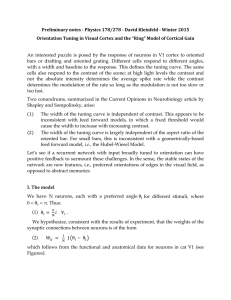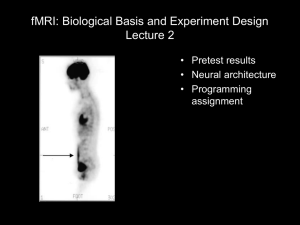Print this Page Presentation Abstract Program#/Poster#: 572.11/FF12
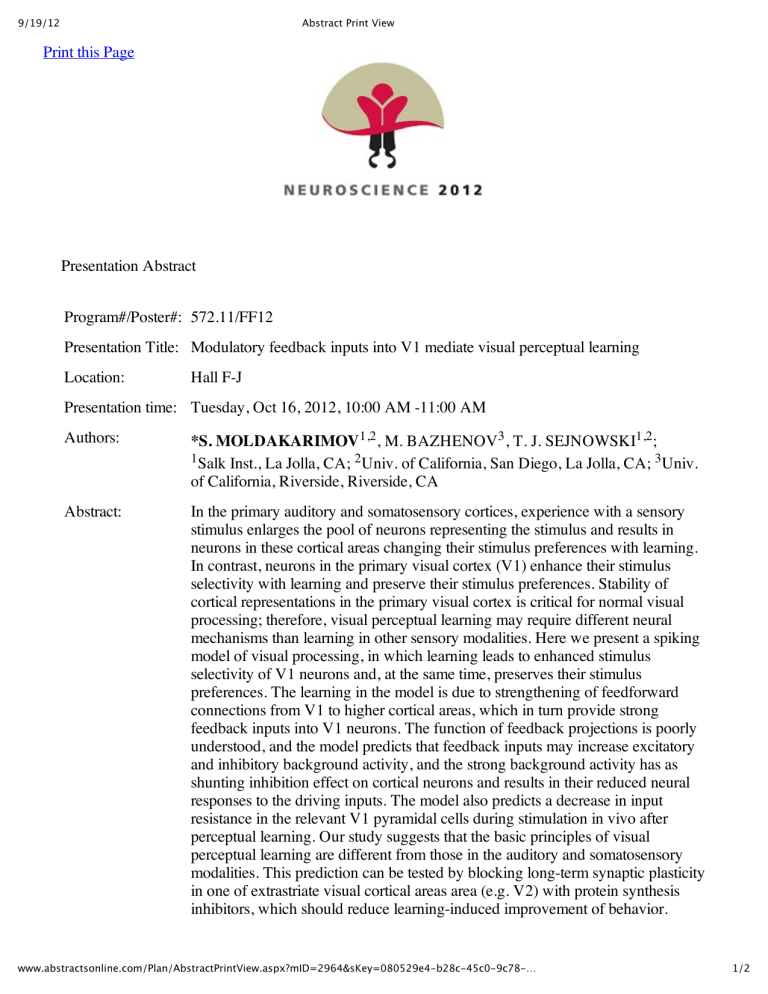
9/19/12
Print this Page
Abstract Print View
Presentation Abstract
Program#/Poster#: 572.11/FF12
Presentation Title: Modulatory feedback inputs into V1 mediate visual perceptual learning
Location: Hall F-J
Presentation time: Tuesday, Oct 16, 2012, 10:00 AM -11:00 AM
Authors:
Abstract:
*S. MOLDAKARIMOV
1,2
, M. BAZHENOV
3
, T. J. SEJNOWSKI
1,2
;
1
Salk Inst., La Jolla, CA;
2
Univ. of California, San Diego, La Jolla, CA;
3
Univ.
of California, Riverside, Riverside, CA
In the primary auditory and somatosensory cortices, experience with a sensory stimulus enlarges the pool of neurons representing the stimulus and results in neurons in these cortical areas changing their stimulus preferences with learning.
In contrast, neurons in the primary visual cortex (V1) enhance their stimulus selectivity with learning and preserve their stimulus preferences. Stability of cortical representations in the primary visual cortex is critical for normal visual processing; therefore, visual perceptual learning may require different neural mechanisms than learning in other sensory modalities. Here we present a spiking model of visual processing, in which learning leads to enhanced stimulus selectivity of V1 neurons and, at the same time, preserves their stimulus preferences. The learning in the model is due to strengthening of feedforward connections from V1 to higher cortical areas, which in turn provide strong feedback inputs into V1 neurons. The function of feedback projections is poorly understood, and the model predicts that feedback inputs may increase excitatory and inhibitory background activity, and the strong background activity has as shunting inhibition effect on cortical neurons and results in their reduced neural responses to the driving inputs. The model also predicts a decrease in input resistance in the relevant V1 pyramidal cells during stimulation in vivo after perceptual learning. Our study suggests that the basic principles of visual perceptual learning are different from those in the auditory and somatosensory modalities. This prediction can be tested by blocking long-term synaptic plasticity in one of extrastriate visual cortical areas area (e.g. V2) with protein synthesis inhibitors, which should reduce learning-induced improvement of behavior.
www.abstractsonline.com/Plan/AbstractPrintView.aspx?mID=2964&sKey=080529e4-‐‑b28c-‐‑45c0-‐‑9c78-‐‑… 1/2
9/19/12
Disclosures:
Keyword(s):
Support:
Abstract Print View
S. Moldakarimov: None. M. Bazhenov: None. T.J. Sejnowski: None.
CORTICAL PLASTICITY
LEARNING
PERCEPTION
Howard Hughes Medical Institute
ONR MURI Award (N00014-10-1-0072)
NINDS (R01 NS060870)
NIDCD (R01 DC011422)
NIBIB (R01 EB009282)
[Authors]. [Abstract Title]. Program No. XXX.XX. 2012 Neuroscience Meeting
Planner. New Orleans, LA: Society for Neuroscience, 2012. Online.
2012 Copyright by the Society for Neuroscience all rights reserved. Permission to republish any abstract or part of any abstract in any form must be obtained in writing by SfN office prior to publication.
www.abstractsonline.com/Plan/AbstractPrintView.aspx?mID=2964&sKey=080529e4-‐‑b28c-‐‑45c0-‐‑9c78-‐‑… 2/2



